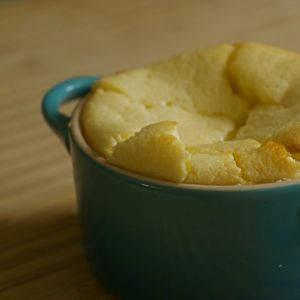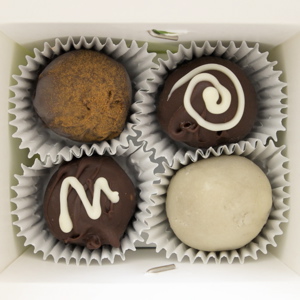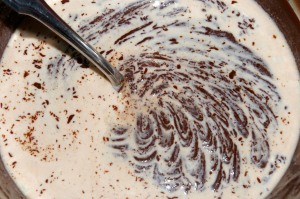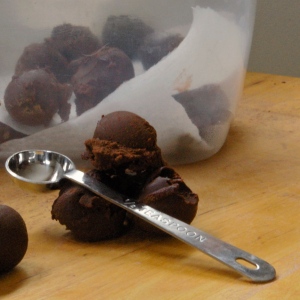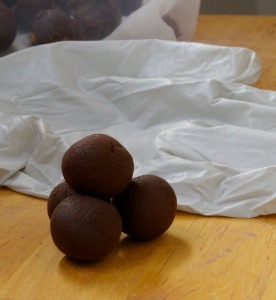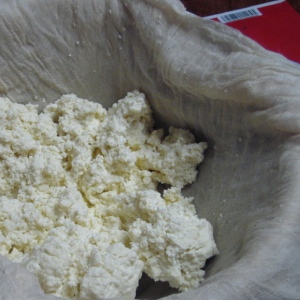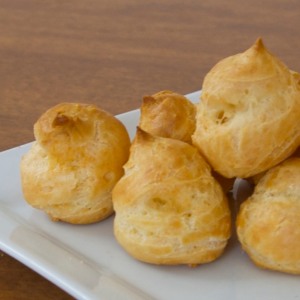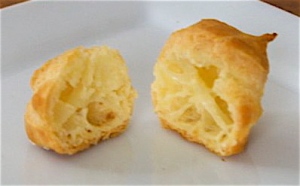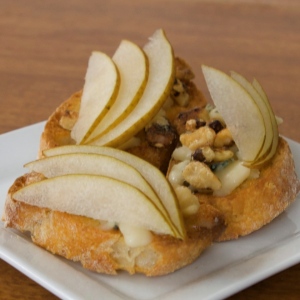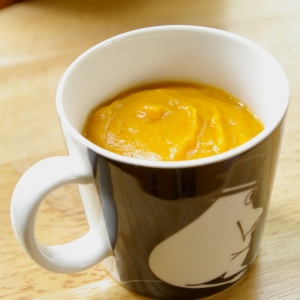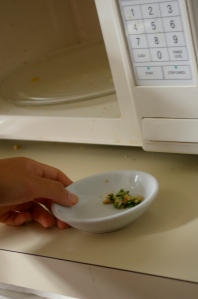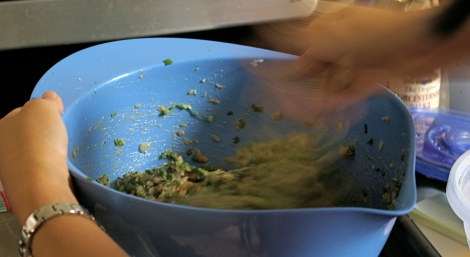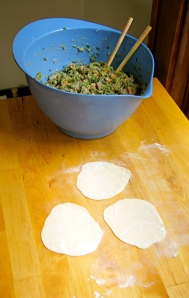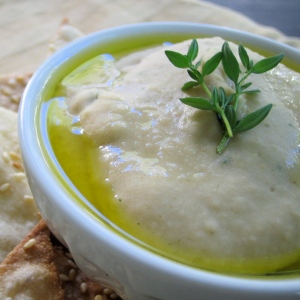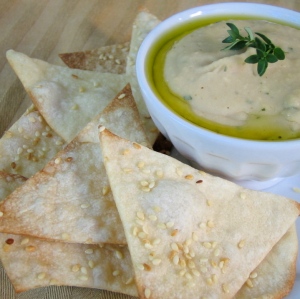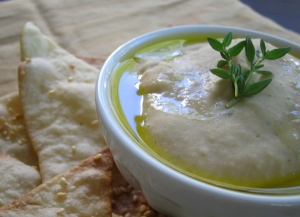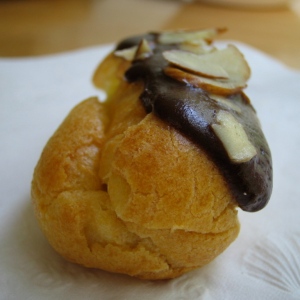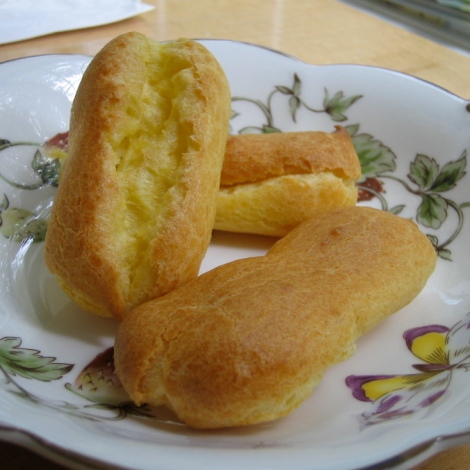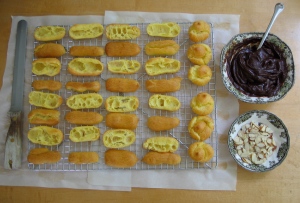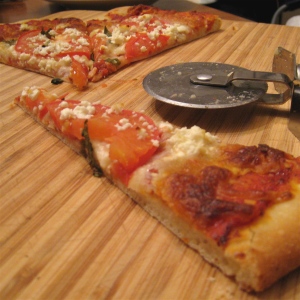
We had to throw the pizza dough. Ya know, toss the dough up in the air, spinning it around to flatten it out. That whole thing. That was the one rule for this month’s Daring Baker’s Challenge. And we had to catch it on camera.

I’ve thrown pizza dough before, although I don’t remember whom I learned from. It is by far the easiest and quickest way to stretch out dough to make some pies. However, I can’t thrown and photograph at the same time. Even that is a little too much coordination for me. Roomies could be enlisted, but better yet, why not invite a few friends and we could all try throwing pizza. And so I threw a pizza throwing party.
For the participants in Daring Baker’s (an online baking group where participants try the same recipe each month and blog about the experience) who had no idea how to throw pizza, video links were provided. My favorite video depicts a portly man in a pizzeria kitchen deftly stretching a circle of white dough over the back of his hands, humming or singing in Italian to That’s Amore which plays in the background. He throws the dough up towards the 20-foot ceiling. It sails into the air like a wobbly Frisbee, growing to two or three feet in diameter. He tosses, and tosses, and nearly drops it, and tosses again until he finally slaps it down on a large pizza peel. My dinning room ceiling isn’t that tall, and I contemplated washing it in case someone tossed the dough a little too high. I did opt to clean the floor in case some dough got dropped.
Dough is not that hard to make, especially with the use of an electric mixer. I’m always excited to use the kitchen aid mixer I stole from my brother (he wasn’t about to take it to London with him, now was he?). Although it tends to collect dust sitting in the corner of the kitchen, better it collects dust in my kitchen than my parent’s garage. [It’s also a terracotta red (limited edition from William-Sonoma), which my favorite color, ever. My brother doesn’t know it yet, but he’s never getting it back because I’m designing my dream kitchen around that appliance once I become a rich doctor…one day.]
I digress… dough… not that hard: a little yeast, a little sugar to feed the yeast, a little salt to keep things savory, some olive oil to keep things from getting too sticky, a boat load of flour, and just enough water to bring it all together. I made the dough the night before. Dough of the bread-variety takes time. It needs its beauty rest to give it stretch and elasticity. It you start working it too soon, it tears. Very sad. There’s some chemistry going on here with the gluten in the flour, but I don’t remember exactly what, just that patience and time are important. [Two things I don’t always have when it comes to dough, much to my detriment when I try to squish and squish pizza dough into the shape I want, and it just scrunches back into the ball it started as. It’s a fight the dough always wins.]
The electric mixer is great, but it dough still needs a little loving touch. Did I mention this recipe made a ton of dough, enough for 4-6 pizzas? That’s a lot for my weak arms to knead, so I resorted to standing on a milk crate to give myself enough height to put my weight into it. When I retire from medicine to become a chef or a baker, I’ll have the arms of a bread maker who kneaded bread every day. For now I’ll stick to the heavy-book-bag curl. Once all the flour and moisture was well incorporated, I split the dough into quarters, formed them into balls, and tucked them in the fridge on an oiled pan. Then it was on to batch number two.
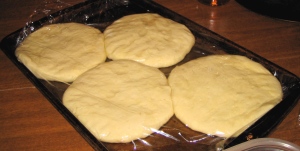
Disk of dough all snuggled together!
The next day, two hours before we would be throwing, I formed the balls into thick disks. By this point, all that moisture-flour chemistry that was going on in the fridge overnight made the dough pretty elastic, too elastic in fact. It comes out of the fridge cold and cranky, and there’s just no way a baseball size hunk of dough is going to flatten into a 16-inch, thin crust pizza in one go. It needs time to rest between stretches. The instructions were pretty adamant about a two-hour rest. I don’t know if the dough is too stretchy if you wait much longer. My dough sat around for three hours, and it was pretty stretchy in the middle, but that could have been our faulty technique.
My friends arrived and we started preparing the toppings. I’ll get to those in a moment, but first, the throwing! I demonstrated first, covering one of the disks of dough with a lot of flour. I laid it over the back of my hands, off center. By now the dough was super stretchy and I didn’t want the center to get thin too quickly. I tossed it a few times, and it was already getting thin. My roomie, M., stood ready with her digital camera, but the timing of the click and the toss was pretty hard to capture. I stopped throwing when it felt like I was about to punch a fist through the dough. I laid it on the pizza pan, pre-coated in semolina flour to keep it from sticking. The edges were a little thick, so I stretched those out a little bit. My friends, S., A., and R., also took turns throwing.
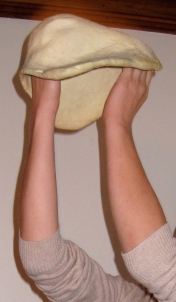


[Up….. Up….. and Away!]
We caught a few good photos and a lot where we looked pretty dorky. [My apologies to my friends for putting up any dorky photos on this post.] When we had two pies tossed and stretch, it was time to add the toppings.
Oh, the toppings [yum yummm yum]… such delicious options! Tomato, basil and feta is one of my all-time favorite pizzas. I also LOVE breaded eggplant, which we paired with baby Portobello mushrooms. These two pizzas got home-spiced sauce made from tomato paste and Italian herbs and a healthy layer of mozzarella.
My roommate, M., decided to recreate a mashed potato and bacon pizza from one of her favorite dives in New Haven, where she went to college. It includes: bacon [yum], garlic sautéed in bacon fat [double yum], and garlic mashed potatoes [scrumptious], all topped with cheese. When I told my boyfriend about this concoction over the phone, he was appalled on the other end of the line: “Starch on starch! Who came up with that idea?!” Well, I know he’s a purist when it comes to Italian cooking [please note: he’s not Italian], but I don’t care because it was delicious. And anything that makes my house smell of bacon perfectly fine by me [ha-rumph!].
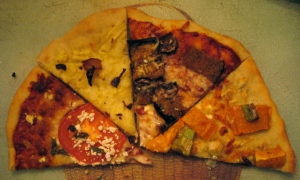
Tomato and feta; bacon and mashed potato; eggplant and mushroom; butternut squash and leeks
Our last pizza took advantage of the enormous butternut squash I bought at the farmer’s market the week before. We roasted a few slices, along with some leftover leeks from a butternut squash soup, and threw that on a pie with some olive oil, garlic, and goat cheese. Hot damn, it was good. Squash, leek, and goat cheese really should be combined way more often.
All the pizzas were baked at 400 degree Fahrenheit on a pizza stone for about 20 minutes. The stone should be placed in the lower half of the oven so the dough browns on the bottom and the cheese gets bubbly on top at just the same time. Then pull out the pie, take a pizza cutter to it, and enjoy!
BASIC PIZZA DOUGH
Original recipe taken from “The Bread Baker’s Apprentice” by Peter Reinhart.
Makes 6 pizza crusts (about 9-12 inches/23-30 cm in diameter).
Ingredients:
4 1/2 Cups (20 1/4 ounces/607.5 g) Unbleached high-gluten (%14) bread flour or all purpose flour, chilled –
1 3/4 Tsp Salt
1 Tsp Instant yeast
1/4 Cup (2 ounces/60g) Olive oil or vegetable oil (both optional, but it’s better with)
1 3/4 Cups (14 ounces/420g or 420ml) Water, ice cold (40° F/4.5° C)
1 Tb sugar
Semolina/durum flour or cornmeal for dusting
DAY ONE
Method:
1. Mix together the flour, salt and instant yeast in a big bowl (or in the bowl of your stand mixer).
2. Add the oil, sugar and cold water and mix well (with the help of a large wooden spoon or with the paddle attachment, on low speed) in order to form a sticky ball of dough. On a clean surface, knead for about 5-7 minutes, until the dough is smooth and the ingredients are homogeneously distributed. If it is too wet, add a little flour (not too much, though) and if it is too dry add 1 or 2 teaspoons extra water.
NOTE: If you are using an electric mixer, switch to the dough hook and mix on medium speed for the same amount of time.The dough should clear the sides of the bowl but stick to the bottom of the bowl. If the dough is too wet, sprinkle in a little more flour, so that it clears the sides. If, on the contrary, it clears the bottom of the bowl, dribble in a teaspoon or two of cold water.
The finished dough should be springy, elastic, and sticky, not just tacky, and register 50°-55° F/10°-13° C.
3. Flour a work surface or counter. Line a jelly pan with baking paper/parchment. Lightly oil the paper.
4. With the help of a metal or plastic dough scraper, cut the dough into 6 equal pieces (or larger if you want to make larger pizzas).
NOTE: To avoid the dough from sticking to the scraper, dip the scraper into water between cuts.
5. Sprinkle some flour over the dough. Make sure your hands are dry and then flour them. Gently round each piece into a ball.
NOTE: If the dough sticks to your hands, then dip your hands into the flour again.
6. Transfer the dough balls to the lined jelly pan and mist them generously with spray oil. Slip the pan into plastic bag or enclose in plastic food wrap.
7. Put the pan into the refrigerator and let the dough rest overnight or for up to thee days.
NOTE: You can store the dough balls in a zippered freezer bag if you want to save some of the dough for any future baking. In that case, pour some oil(a few tablespooons only) in a medium bowl and dip each dough ball into the oil, so that it is completely covered in oil. Then put each ball into a separate bag. Store the bags in the freezer for no longer than 3 months. The day before you plan to make pizza, remember to transfer the dough balls from the freezer to the refrigerator.
DAY TWO
8. On the day you plan to eat pizza, exactly 2 hours before you make it, remove the desired number of dough balls from the refrigerator. Dust the counter with flour and spray lightly with oil. Place the dough balls on a floured surface and sprinkle them with flour. Dust your hands with flour and delicately press the dough into disks about 1/2 inch/1.3 cm thick and 5 inches/12.7 cm in diameter. Sprinkle with flour and mist with oil. Loosely cover the dough rounds with plastic wrap and then allow to rest for 2 hours.
9. At least 45 minutes before making the pizza, place a baking stone on the lower third of the oven. Preheat the oven as hot as possible (500° F/260° C).
NOTE: If you do not have a baking stone, then use the back of a jelly pan. Do not preheat the pan.
10. Generously sprinkle the back of a jelly pan with semolina/durum flour or cornmeal. Flour your hands (palms, backs and knuckles). Take 1 piece of dough by lifting it with a pastry scraper. Lay the dough across your fists in a very delicate way and carefully stretch it by bouncing it in a circular motion on your hands, and by giving it a little stretch with each bounce. Once the dough has expanded outward, move to a full toss.
NOTE: Make only one pizza at a time.
During the tossing process, if the dough tends to stick to your hands, lay it down on the floured counter and reflour your hands, then continue the tossing and shaping.
In case you would be having trouble tossing the dough or if the dough never wants to expand and always springs back, let it rest for approximately 5-20 minutes in order for the gluten to relax fully,then try again.
You can also resort to using a rolling pin, although it isn’t as effective as the toss method.
11. When the dough has the shape you want (about 9-12 inches/23-30 cm in diameter – for a 6 ounces/180g piece of dough), place it on the back of the jelly pan, making sure there is enough semolina/durum flour or cornmeal to allow it to slide and not stick to the pan.
12. Lightly top it with sweet or savory toppings of your choice.
NOTE: Remember that the best pizzas are topped not too generously. No more than 3 or 4 toppings (including sauce and cheese) are sufficient.
13. Slide the garnished pizza onto the stone in the oven or bake directly on the jelly pan. Close the door and bake for abour 5-8 minutes.
NOTE: After 2 minutes baking, take a peek. For an even baking, rotate 180°.
If the top gets done before the bottom, you will need to move the stone or jelly pane to a lower shelf before the next round. On the contrary, if the bottom crisps before the cheese caramelizes, then you will need to raise the stone or jelly.
14. Take the pizza out of the oven and transfer it to a cutting board or your plate. In order to allow the cheese to set a little, wait 3-5 minutes before slicing or serving.

